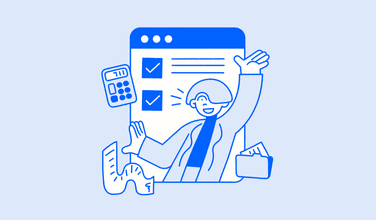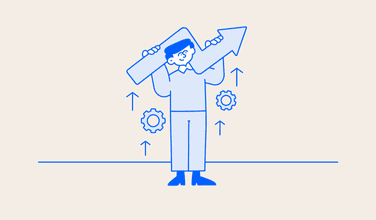Guide to Ecommerce Fulfillment & Shipping for Singapore Ecommerce Sellers
Ecommerce fulfilment and shipping for your Singapore-based business matters. This guide unpacks how the right strategy can influence your bottom line and help you find what’ll work best for you - whether it’s in-house fulfilment, dropshipping or a solid partnership with a 3PL.

You’ll be glad to know the most important “p” in this guide is not “packaging”. It’s profit. That’s because your ecommerce fulfilment and shipping strategy can influence your bottom line.
We’ll help you understand more about ways to leverage the opportunities of logistics to drive revenue and growth for your e-commerce business - equipping you to sell on popular platforms like Lazada, Qoo10, Carousell and Shopee. While you’re focusing on that, you can count on us to take care of your ecommerce accounting, reporting and tax filing. Think of us as experts at your command!
Skip to:
What Is the Definition of Fulfillment in Ecommerce?Ecommerce Fulfillment in Singapore: Why You Should Care
Strategy for Local & Global Sellers
Canine & Catwalk: Calculating Product Shipping Costs
Ecommerce Fulfillment & Shipping Models
What Are the Best Services Offered by Fulfillment Centres?
From New Seller to Seasoned Ecommerce Sales
What Is the Definition of Fulfillment in Ecommerce?
It’s the process from the moment your customer hits “CHECKOUT” to the moment their package is delivered to them. Shipping forms part of the overall fulfilment process, specifically referring to the movement or transit of a package from its original storage location to its final physical destination.

Ecommerce Fulfillment in Singapore: Why You Should Care
First, the benefits: More conversions. More sales. Second, the business obligation. As a Singapore-based business owner who’s planning to sell online, order fulfilment is your responsibility. You don’t have a choice about that duty but you DO have a choice about how you’ll handle the processing of your online orders.
These are the 3 main methods of fulfilment which we cover in a detailed overview a bit further down:
- In-house fulfilment
- Dropshipping
- Third-party Logistics aka 3PL
Strategy for Local & Global Sellers
There are a few important considerations that’ll help you decide on a fulfilment strategy or refine your existing one. Let’s explore them through the lens of Verine, the proud owner of a small business called Canine & Catwalk that sells custom pet apparel and accessories online.
Shipping costs & methods:
At one end of the spectrum, Verine could offer free shipping and on the other, she could pass the full cost of shipping to her customers. She chooses flat-rate shipping, a happy medium where she absorbs some of the costs without putting her profit margins at risk. More about methods in a bit.
Products weights:
Whenever a new product’s added to the Canine & Catwalk catalogue, Verine takes care to measure, weigh and record product specs. This info serves a dual purpose: it’s added to product descriptions for customers to view and Verine also factors this info in when working out total shipping costs and product prices.
Sourcing packaging materials or suppliers:
Branded packaging is part of Verine’s growth and customer acquisition strategy but down the line, she’ll consider free packaging provided by couriers and seal packages with branded Canine & Catwalk stickers.
Packaging preferences (and presentation):
Verine takes pride in how she prepares each of her orders, adding a polaroid of a pup to each before boxing it up. Boxes are also weighed and factored into shipping prices, take a look below.
Canine & Catwalk: Calculating Product Shipping Costs
Here’s how Verine would calculate the total price of a dog bow tie she’s just launched so it includes e-commerce shipping costs:
| Cost of Bow Tie (product) | $4.50 |
| Cost of packaging materials & polaroid | $0.50 |
| Cost of shipping | $6 |
| Fee for credit card | $2.75 |
| Product profit margin | 40% |
| TOTAL PRICE: | $25.55 |
| Remember: Any final decisions you make should be informed by the underlying financial data of your business. Want to ping your accountant and check reports on the go? | |
Ecommerce Fulfillment & Shipping Models
| Method & meaning | What’s to like? | What’s not to like? | Who it’s best for? |
|---|---|---|---|
Direct order fulfilment (or self-fulfilment) The entire process happens in-house (even IN your house) using all your facilities, supplies and assets. |
|
|
Startups selling less than 100 items per month, like the artist who features limited edition work on Esty or C2C platforms similar |
|
Third-party Logistics All functions of the supply chain are outsourced and managed through external resources |
|
|
Startups who lack resources are looking to scale or focus efforts on product development and marketing |
Dropshipping E-commerce orders go directly to your chosen supplier or manufacturer and they sort out the rest. Products are never handled directly by you. |
|
|
A good option for startups just starting, acting as a supplementary side hustle without full-time obligations or risk |
What Are the Best Services Offered by Fulfillment Centres?
Local or global, a fulfilment company takes the reins of processing, warehousing and storage of your goods right down to the shipping of the actual orders. So when a customer hits that glorious “CHECKOUT” button, signals are sent straight to Verine’s fulfilment centre so they can get to work to pick, pack, and ship orders on her behalf.
It’s a pretty neat way to alleviate hands-on responsibilities linked to hiring, managing stock, tech equipment, ops and infrastructure. Here’s what Verine would consider when looking for a 3PL fulfilment partner with services that suit her:
- E-commerce platform integration: It’s a non-negotiable that Verine finds a provider that can successfully integrate her e-commerce platforms.
- Multichannel integration: Verine sells Canine & Catwalk products on Qoo10, Shopify and Lazada. She hopes to soon add her merchandise onto Shopee, Amazon and Zalora so she needs a partner who’s ready to accommodate her broad (and growing) needs across all of these online platforms.
- Shipping provider integration: Verine needs the assurance that shipping will be a seamless process. The more orders completed, the more she can scale.
- Costs & fees: Are the financial obligations for warehousing and fulfilment realistic, sustainable, fixed, scalable?
- Shipping turnaround times: Are they speedy and in line with what her customers have come to expect?
- Product volumes: Do they ship broad & vast or specific & specialised? Or both? And whatever their volumes, does this model align with Canine & Catwalk?
- Customer support: Is there a single person Verine can reach out to? Do they offer live chat she can access on her commute for a quick query? Does she have a direct phone line in case something goes wrong?
- Real-time reporting & inventory: What management system or software is the driving force behind warehousing capabilities? Will it scale, suit or complement Verine’s products?
- Network of fulfilment centres: To reduce her shipping costs and get products to customers quicker, Verine is looking for a 3PL with the added benefit of centres in different locations.
From New Seller to Seasoned Ecommerce Sales
Tip
The world of ecommerce can be exhilarating but the weight of invoices, reports and taxes can quickly make it lose its sparkle. That’s where we come in. Osome provides an accounting service tailored to suit ecommerce businesses and free you from manual accounting. Talk to us to see how our experienced accountants in Singapore can help you save you money, time and the entrepreneur’s ever-elusive luxury of sleep.







